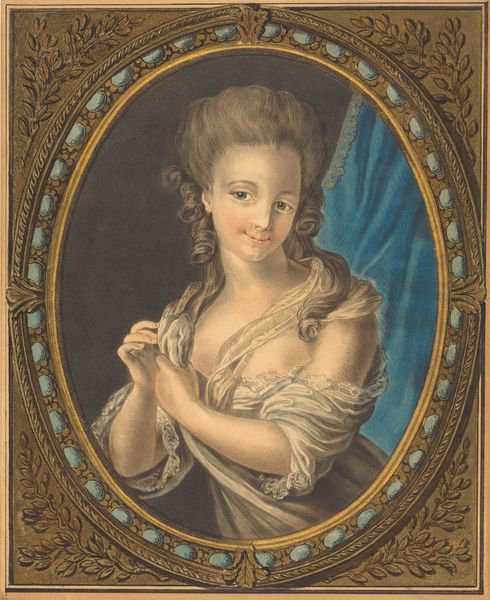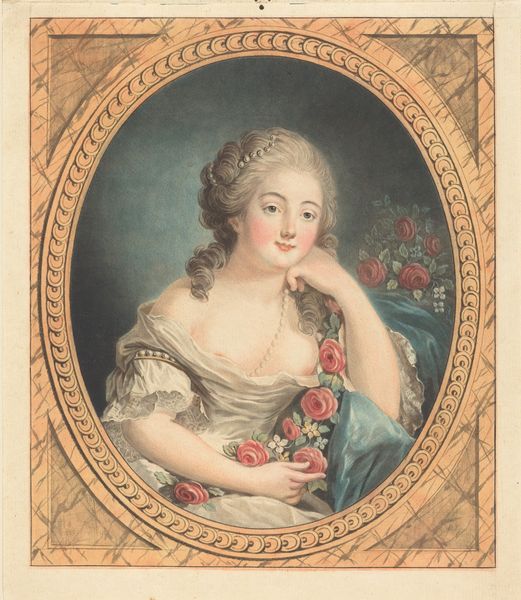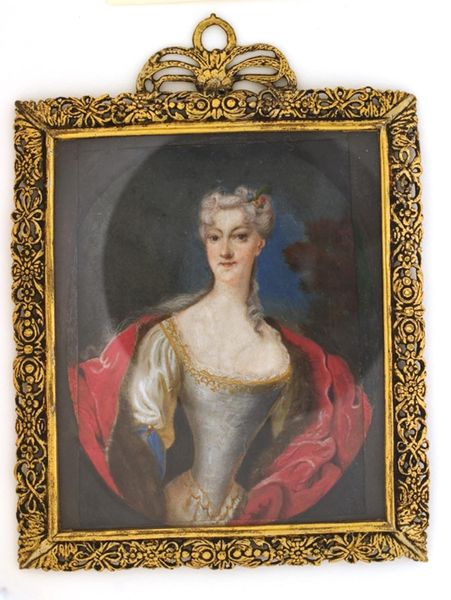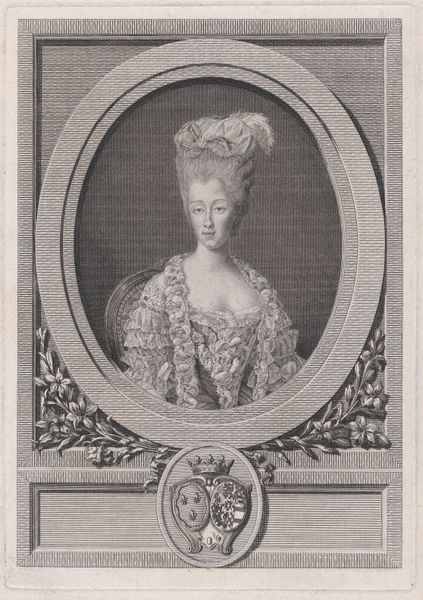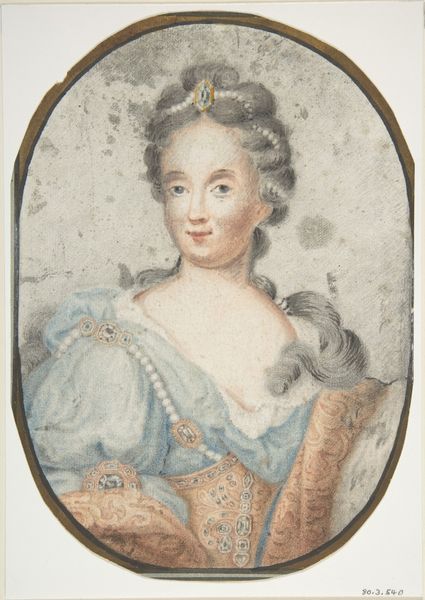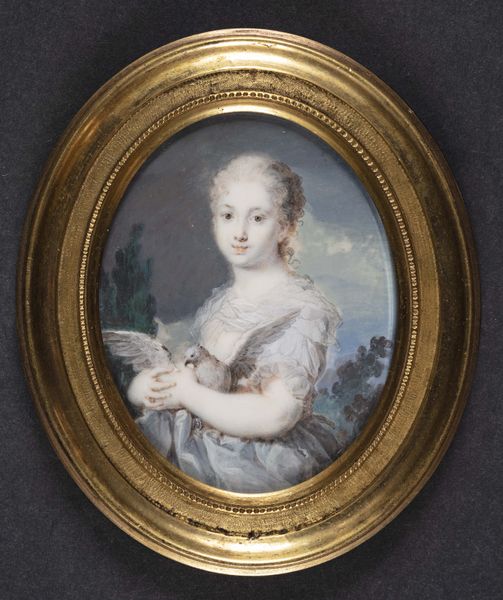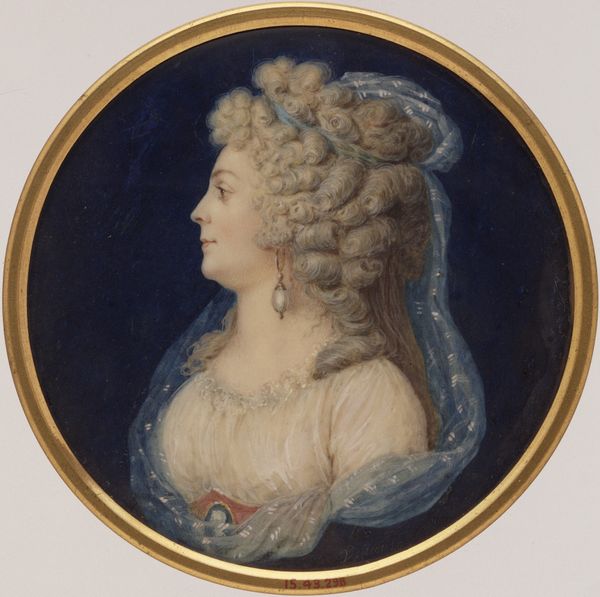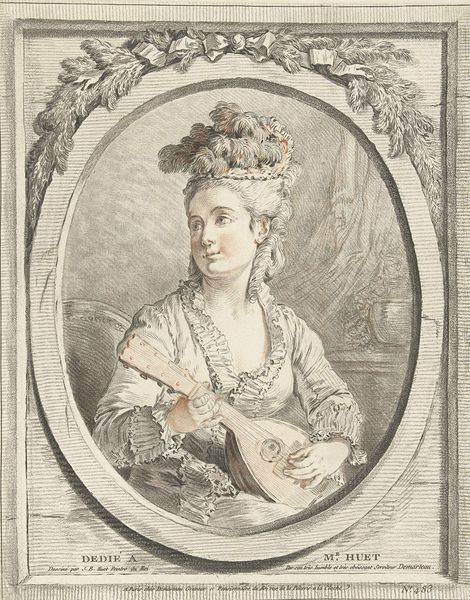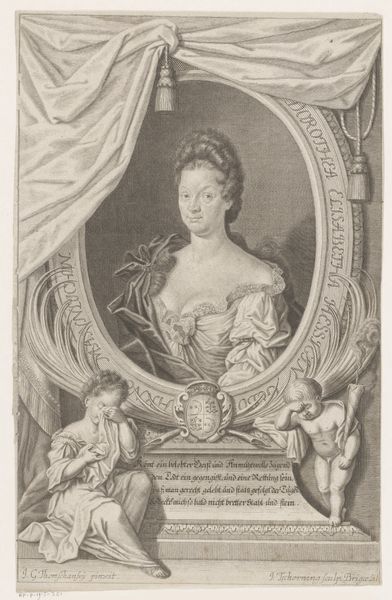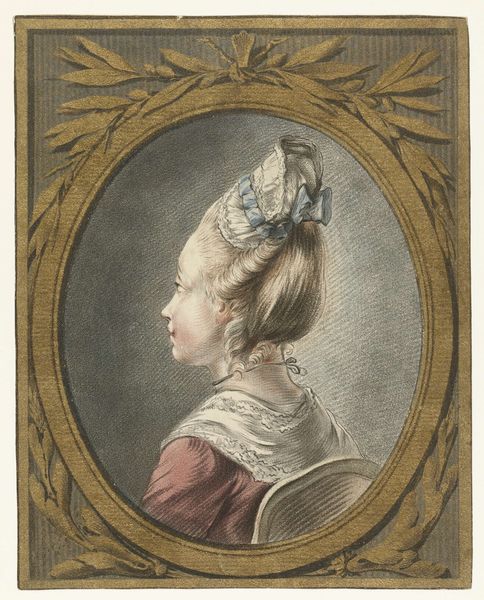
Dimensions: 252 × 203 mm (image/sight); 395 × 304 mm (frame)
Copyright: Public Domain
Curator: Let’s spend a moment looking at this portrait of Marie Antoinette, dating from 1777 and attributed to Jean-François Janinet. It’s currently held here at the Art Institute of Chicago. What's grabbing your eye initially? Editor: Wow, so much! It's like stepping into a sugared almond dream. The rococo ornamentation—that fluffy hair and dress, those pastel blues—feels so ephemeral and opulent. It's a painting that practically whispers, "Let them eat cake," even though she probably never actually said that, right? Curator: The association is powerful, even if apocryphal. What is fascinating about Janinet’s piece, particularly, is that it blends drawing, painting, etching, and printmaking—techniques reflective of the pre-Revolutionary desire to both disseminate and carefully control the image of the monarchy. Portraits like this were essentially propaganda. Editor: So, high fashion as high politics! I can see that. There's a strange artificiality to the whole thing—that almost caricatured hair, the tightly laced bodice—it's designed to create distance as much as display beauty. She becomes a symbol, an ideal, far removed from everyday reality. The artist makes no pretense of portraying something more than an icon of the aristocracy, and even adds decorative ornament beyond her form with all of the stylized, surrounding elements. Curator: Precisely. We often forget that even artistic endeavors were heavily influenced by political and institutional considerations. How an artist represents the ruling class, how those images circulate – those choices speak volumes. It can reflect the values of the aristocracy or act as subtle counterpoint through satire and commentary. And who gets to see such art, in what context, always matters. Editor: Looking at it through that lens—as carefully managed image-making—I start to wonder about all the versions of Marie Antoinette we see. From historical document, all the way to fashion symbol with high society appeal... Did images such as this, so consciously constructed, unwittingly contribute to the dissatisfaction that eventually toppled the monarchy? Curator: That's a very interesting, plausible point, about whether a kind of resentment formed toward Marie Antoinette as being both a distant sovereign but an incredibly decorated individual. It's something to keep turning over in my mind! Editor: Right? It makes you think about the power of images, the stories they tell and sometimes, the unintended narratives they ignite. Thanks for guiding me to think differently.
Comments
No comments
Be the first to comment and join the conversation on the ultimate creative platform.
